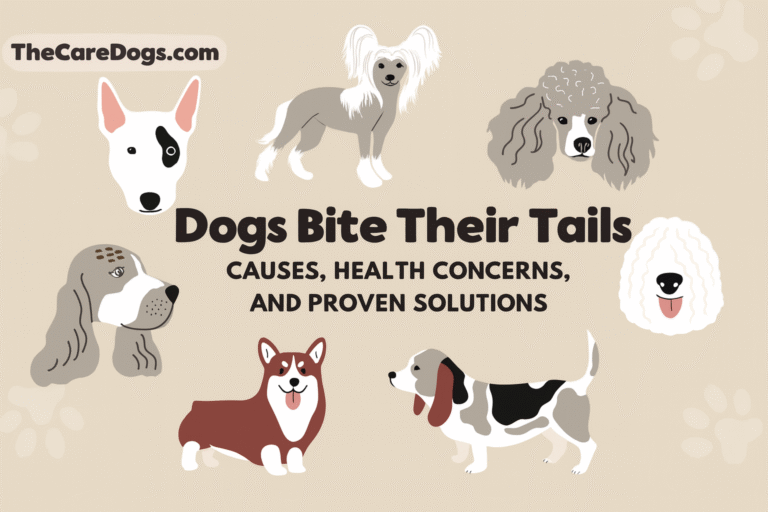Yellow Dog Poop Explained: Common Reasons and Health Risks
You are such a stool aficionado as the owner of a dog—your dog’s stool is a great barometer for how healthy they are, of course. Brown stools are normal, but yellow dumps typically indicate something is wrong. Sometimes it’s nothing, a food change or whatever, but sometimes it is the indication of something very wrong with their digestive or liver system.
To keep your puppy healthy, know why their stool becomes yellow, other things to look out for, and when to see the vet.
1. Why Color Matters in Dog Stool
The brown color of dogs’ stool is due to bile pigments that are released while digesting. Yellow stool can mean:
- Food passed through the digestive tract too quickly
- There is excess bile in the stool
- Digestion of fat is impaired
- There’s inflammation of the intestines or liver
Color changes by themselves are never an emergency—but always interesting, especially when others come along.
2. Normal Causes for Yellow Dog Stools
A. Food Changes or Allergies
Sudden change in diet can upset your dog’s stomach and speed up digestion, so stools are light-colored or yellow. Suspects are:
- Drastic change in brands or formulas
- High-fat treats
- Spicy or oily table foods
Tip: Always acclimate dog food more than 7–10 days to reduce digestive disturbance.
B. Feeding Non-Food Items
Dogs are nosy animals, and nosiness overwhelms them and they’ll ingest something they shouldn’t eat—grass, clothes, crayons, or toys. Some of these will color the stool yellow or irritate the digestive tract.
C. Gastrointestinal Disturbance (GI Inflammation)
Stomach or intestinal inflammation caused by parasites, bacteria, or viruses can speed up digestion so bile doesn’t get the time to digest food properly, hence resulting in yellow stool.
D. Liver or Gallbladder Disease
When either of these organs is not functioning properly, bile production may be disrupted and yellow stool can result.
Conditions underlying that can potentially cause this:
- Hepatitis
- Gallstones
- Blocked bile ducts
E. Pancreatic Insufficiency
If the pancreas of your dog isn’t secreting sufficient digestive enzymes, food simply passes through without proper breakdown—resulting in yellow, oily stools. This is Exocrine Pancreatic Insufficiency (EPI) and should be accompanied by loss of weight with a healthy appetite.
F. Parasitic Infections
Roundworms, Giardia, and coccidia all have the capacity to alter stool color. Parasites induce inflammation of the lining of the intestines, disrupting the uptake of nutrients and pigmentation of the stool.
3. When Yellow Poop Indicates a Larger Issue
Yellow dog stool might be okay one day or now and then, but yellow poops on a regular basis or other issues warrant a call to the vet.
Red flags are:
- Vomiting
- Loss of appetite
- Weight loss
- Diarrhea in excess of 24–48 hours
- Blood in stool
- Lethargy
When they accompany yellow stool, it may be an indication of liver disease, pancreatitis, or systemic infection.
4. Identifying the Cause
When your dog is brought to the vet, they may recommend:
- Stool test (parasites)
- Blood work (liver, kidney, and pancreatic function)
- X-ray or ultrasound (blockage or organ changes)
Your vet will be able to eliminate the cause more quickly if you note down your dog’s diet, recent diet changes, and stool color.
5. Yellow Dog Poop Prevention
While all cases cannot be prevented, you can reduce the risk by:
- Regular diet maintenance
- Deprivation of table foods and fatty snacks
- Prevention of your dog from consuming grass or other substances other than food
- Constant checkups at the vet
- Usage of flea, tick, and parasite prevention
7. The Role of Diet on Stool Color
Digestibility and quality of your dog’s diet have the largest influence on stool color. Fillers, dyes, or fat foods will cause yellow stools. Conversely, good protein mix with median fat and highly digestible carbohydrates will produce good brown stool.
FAQ: Yellow Dog Poop
Q1: Does yellow dog poop always mean illness? Confirmation: NO
Not typically—isolated bouts may be caused by diet fluctuation or loose gut. Frequent yellow stools should be checked by a vet.
Q2: Will my dog’s stool turn yellow due to stress?
Yes. Stress causes gastrointestinal distress, leading to faster passage of the food in the intestine and coloration change.
Q3: What do I offer if my dog has yellow stool?
Start on a plain diet of boiled chicken and rice for 1–2 days before easing back into their normal food.
Q4: Is the color of stool yellow due to dehydration?
Indirectly, yes—dehydration makes stool soft and affects digestion, which affects color.
Q5: Do I need to bring a stool sample before my dog has its veterinary checkup?
Yes. A fresh sample (within 12 hours) will enable your vet to detect parasites and bacteria.
Q6: My dog’s yellow stool is also slimy—why?
Yellow mucus-covered stool is usually a sign of intestinal inflammation, which must be diagnosed by a veterinarian.
Final Thoughts
Yellow dog stool should never be ignored—sometimes harmless, it can also be a sign that gastrointestinal upset awaits, liver disease, or infection. Keep track of your dog’s bowel movement color, consistency, and frequency to spot potential signs of illness early.
A single episode is no reason for alarm, but recurring yellow poop with other signs is a call to your veterinarian’s office. The majority of dogs recover routinely with early treatment and good diet and resume normal, normally pigmented stools.







